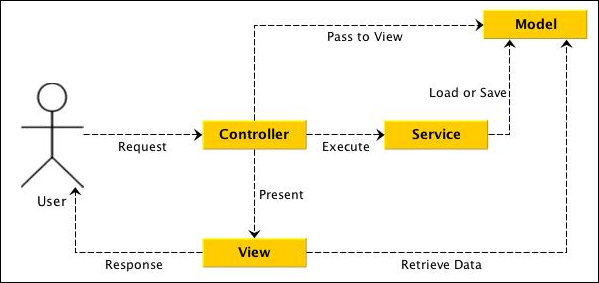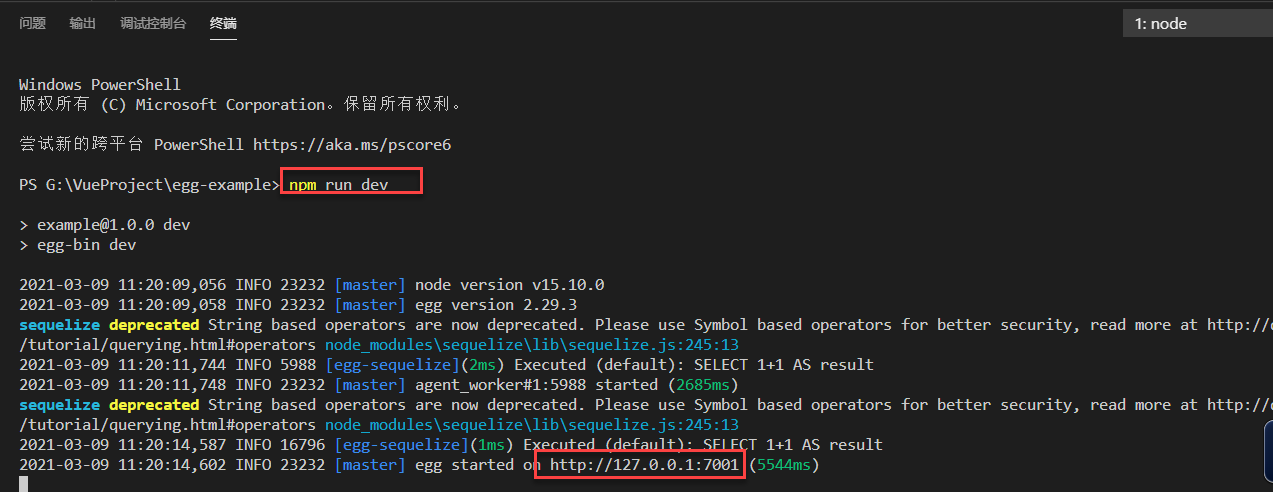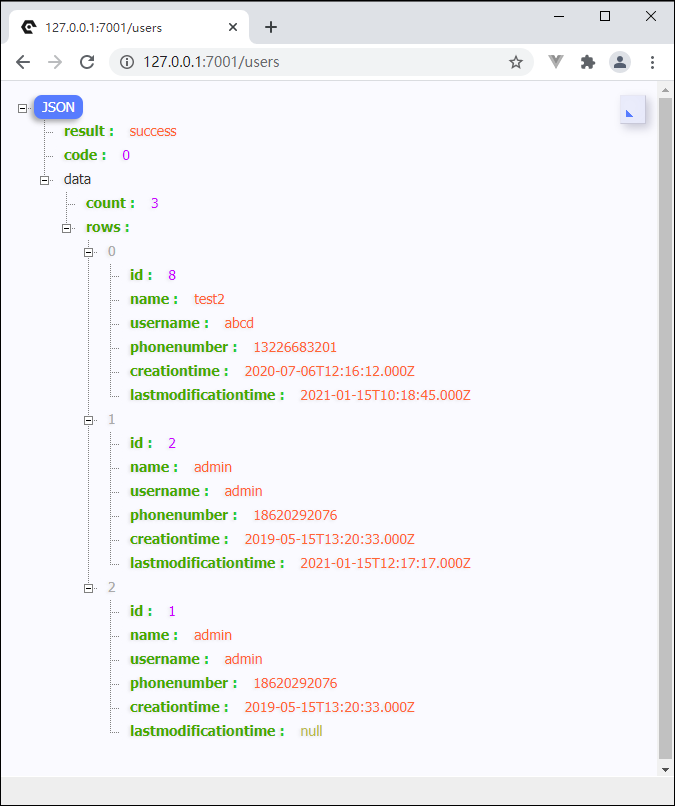使用egg.js开发后端API接口系统
什么是Egg.js
Egg.js 为企业级框架和应用而生,我们希望由 Egg.js 孕育出更多上层框架,帮助开发团队和开发人员降低开发和维护成本。详细的了解可以参考Egg.js的官网:
https://eggjs.org/zh-cn/intro/
。
Egg.js 奉行『约定优于配置』,按照一套统一的约定进行应用开发,Egg 有很高的扩展性,可以按照团队的约定定制框架,团队内部采用这种方式可以减少开发人员的学习成本。
可以理解Egg.js是一个Node框架,同时它也是基于Koa框架基础上的框架,我们大概了解一下它的前身和主要特点即可。
它的特点有:
本篇随笔不是细说Egg.js 的详细内容,毕竟官网介绍还是比较清晰的,我们主要说使用它来做一个后端的API接口系统,后端肯定需要对数据库进行各种操作,用一个JS的方式来访问数据库,利用egg-sequelize插件,创建和数据库表进行绑定的模型进行操作,还是比较新鲜的,用了会发现确实很方便。用Egg.js来开发后端系统,相当于用前端的语言、做法,来开发后端系统了(虽然Egg.js 也可以用来做前端)。

2、 使用egg.js开发后端API接口系统所需插件
我们推荐直接使用脚手架,只需几条简单指令,即可快速生成项目(
npm >=6.1.0
):
$ mkdir egg-example && cd egg-example
$ npm init egg--type=simple
$ npm i
启动项目:
$ npm run dev
其实我们还需要一些额外的插件来跑起来,我的包依赖文件如下所示。
package.json
{"name": "example","version": "1.0.0","description": "## Development","dependencies": {"egg": "^2.10.0",
"egg-cors": "^2.2.3",
"egg-jwt": "^3.1.7",
"egg-mysql": "^3.0.0",
"egg-redis": "^2.4.0",
"egg-scripts": "^2.5.0",
"egg-sequelize": "^4.0.2",
"egg-view-nunjucks": "^2.3.0",
"moment": "^2.29.1",
"mysql2": "^2.2.5",
"node": "^15.10.0"},"devDependencies": {"autod": "^3.0.1","autod-egg": "^1.0.0","egg-bin": "^4.15.0","egg-mock": "^3.19.2","eslint": "^4.18.1","eslint-config-egg": "^7.0.0","factory-girl": "^5.0.2","sequelize-cli": "^4.0.0"},
我们来看看红色部分的内容,其中
egg 是本身的框架需要的插件,这个是整个框架的核心基础;egg-scripts 这是部署eggjs项目的工具;
egg-corss 是跨域处理所需要的,用于设置csrf的配置等;
egg-jwt 是用于对用户身份认证的处理插件;
egg-mysql + Mysql2 是我们做Mysql数据库处理说需要的插件;
egg-redis 是我们用到redis操作,所需要的插件,可选。
egg-sequelize 是我们操作数据库的一个插件,提供很多方便的接口进行处理,可以搭配Mysql或者PostgreSQL、MS SQLServer数据库插件进行处理的
egg-view-nunjucks 是展示视图模板的一个插件。
moment 是一个日期处理插件,可以处理各种日期格式、转换的一个插件库。
egg-project
├── package.json
├── app.js (可选)├── agent.js (可选)├── app
| ├── router.js
│ ├── controller
│ | └── home.js
│ ├── service(可选)│ | └── user.js
│ ├── middleware(可选)│ | └── response_time.js
│ ├──view (可选)│ | └── home.tpl
│ └── extend(可选)│ ├── helper.js (可选)├── config
| ├── plugin.js
| ├── config.default.js
│ ├── config.prod.js
我们这里大概知道以上文件夹和文件的意思即可。
app/router.js
用于配置 URL 路由规则,具体参见
Router
。app/controller/**
用于解析用户的输入,处理后返回相应的结果,具体参见
Controller
。app/service/**
用于编写业务逻辑层,可选,建议使用,具体参见
Service
。app/middleware/**
用于编写中间件,可选,具体参见
Middleware
。
'use strict';
exports.sequelize={
enable:true,
package:'egg-sequelize',
};
exports.mysql={
enable:true,
package:'egg-mysql',
};
exports.nunjucks={
enable:true,
package:'egg-view-nunjucks'};
exports.redis={
enable:true,
package:'egg-redis',
};
exports.jwt={
enable:true,
package:'egg-jwt',
};
exports.cors={
enable:true,
package:'egg-cors',
};
为了访问Mysql数据库,我们还需要在config/config.default.js文件中配置好对应的关系。
config/config.default.js
'use strict';
module.exports= appInfo =>{
const config= exports ={};//use for cookie sign key, should change to your own and keep security config.keys = appInfo.name + '_{{keys}}';
config.jwt={
secret:'123456', //自定义token的加密条件字符串,可按各自的需求填写 };//Mysql config.sequelize ={
dialect:'mysql',
host:'localhost',
port:3306,
database:'myprojectdb',
username:'root',
password:'123456',
define: {//freezeTableName默认值为false,会自动在表名后加s freezeTableName: true,//timestamps默认值为true,会自动添加create_time和update_time timestamps: false}
};//csrf 安全配置 config.security ={
csrf: {
enable:false,
ignoreJSON:true},//允许访问接口的白名单 domainWhiteList: ['*'] //['http://localhost:8080'] };
config.cors={
origin:'*',
allowMethods:'GET, HEAD, PUT, POST, DELETE, PATCH'};//........其他配置............... returnconfig;
};
为了给前端提供Web API接口,我们需要为不同的业务对象提供路由入口,路由定义,统一在app/route.js文件中定义。
app/route.js
module.exports = app =>{
const { router, controller, jwt }=app;
router.get('/', controller.home.index);
router.get('/news', controller.news.list);
router.post('/login', controller.users.login); //登录并生成Token router.resources('users', '/users', controller.users);
};
以上我们users 是RESTful 的方式来定义路由, 我们提供了
app.router.resources('routerName', 'pathMatch', controller)
快速在一个路径上生成
CRUD
路由结构。
类似RESTful定义
router.resources('posts', '/api/posts', controller.posts);我们只需要在
posts.js
里面实现对应的函数就可以了。

我这里的users实现了上面部分的接口,以提供列表展示-L、创建-C、获取-R、更新-U、删除-D等操作。
app\controller\users.js
'use strict';
const Controller= require('egg').Controller;//控制器类入口//实现路由几个常规函数,包括列表及CRUD的操作 class UserController extends Controller {
async index() {//展示列表数据-L const ctx = this.ctx;const query={
limit: ctx.helper.parseInt(ctx.query.limit),
offset: ctx.helper.parseInt(ctx.query.offset),
};var data =await ctx.service.user.list(query);var json =ctx.helper.json(data)
ctx.body=json
}
async show() {//显示某记录具体的数据-R const ctx = this.ctx;
ctx.body=await ctx.service.user.find(ctx.helper.parseInt(ctx.params.id));
}
async create() {//新增一个记录-C const ctx = this.ctx;
const user=await ctx.service.user.create(ctx.request.body);
ctx.status= 201;
ctx.body=user;
}
async update() {//更新指定的记录-U const ctx = this.ctx;
const id=ctx.helper.parseInt(ctx.params.id);
const body=ctx.request.body;
ctx.body=await ctx.service.user.update({
id,
updates: body
});
}
async destroy() {//删除指定的记录-D const ctx = this.ctx;
const id=ctx.helper.parseInt(ctx.params.id);
await ctx.service.user.del(id);
ctx.status= 200;
}
}
module.exports= UserController;
这里UserController 控制器没有直接访问数据库,而是间接通过service对象进行操作数据库的。service中的user.js代码如下所示。
app\service\user.js
'use strict';
const Service= require('egg').Service;//服务类入口,用于封装具体的数据库访问 class User extends Service {
async login(usernameOrEmail, password) {var user = await this.ctx.model.User.findOne({
where: {
$or: [
{ username: usernameOrEmail },
{ emailaddress: usernameOrEmail }
]
}
});var success = false;var error = "";if(user) {
success= true}return{
success,
error
}
}
async list({ offset= 0, limit = 10}) {return this.ctx.model.User.findAndCountAll({
offset,
limit,
order: [['creationtime', 'desc' ], [ 'id', 'desc']],
});
}
async find(id) {
const user= await this.ctx.model.User.findByPk(id);if (!user) {this.ctx.throw(404, 'user not found');
}returnuser;
}
async create(user) {return this.ctx.model.User.create(user);
}
async update({ id, updates }) {
const user= await this.ctx.model.User.findByPk(id);if (!user) {this.ctx.throw(404, 'user not found');
}returnuser.update(updates);
}
async del(id) {
const user= await this.ctx.model.User.findByPk(id);if (!user) {this.ctx.throw(404, 'user not found');
}returnuser.destroy();
}
}
module.exports= User;
而Service中,访问数据库主要通过
egg-sequelize
插件中提供的 this.ctx.model.User 对象进行操作数据库的
sequelize
是一个广泛使用的 ORM 框架,它支持 MySQL、PostgreSQL、SQLite 和 MSSQL 等多个数据源。
app\model\user.js
'use strict';
module.exports= app =>{
const { STRING, INTEGER, DATE }=app.Sequelize;
const User= app.model.define('abpusers', {
id: { type: INTEGER, primaryKey:true, autoIncrement: true},
name: STRING(64),
username: STRING(64),
phonenumber: STRING(64),
creationtime: DATE,
lastmodificationtime: DATE,
});returnUser;
};
sequelize
定义了数据库不同的类型,它的类型定义如下所示。
Sequelize.STRING //VARCHAR(255) Sequelize.STRING(1234) //VARCHAR(1234) Sequelize.STRING.BINARY //VARCHAR BINARY Sequelize.TEXT //TEXT Sequelize.TEXT('tiny') //TINYTEXT Sequelize.CITEXT //CITEXT PostgreSQL and SQLite only. Sequelize.INTEGER//INTEGER Sequelize.BIGINT //BIGINT Sequelize.BIGINT(11) //BIGINT(11) Sequelize.FLOAT//FLOAT Sequelize.FLOAT(11) //FLOAT(11) Sequelize.FLOAT(11, 10) //FLOAT(11,10) Sequelize.REAL//REAL PostgreSQL only. Sequelize.REAL(11) //REAL(11) PostgreSQL only. Sequelize.REAL(11, 12) //REAL(11,12) PostgreSQL only. Sequelize.DOUBLE//DOUBLE Sequelize.DOUBLE(11) //DOUBLE(11) Sequelize.DOUBLE(11, 10) //DOUBLE(11,10) Sequelize.DECIMAL//DECIMAL Sequelize.DECIMAL(10, 2) //DECIMAL(10,2) Sequelize.DATE//DATETIME for mysql / sqlite, TIMESTAMP WITH TIME ZONE for postgres Sequelize.DATE(6) //DATETIME(6) for mysql 5.6.4+. Fractional seconds support with up to 6 digits of precision Sequelize.DATEONLY //DATE without time. Sequelize.BOOLEAN //TINYINT(1) Sequelize.ENUM('value 1', 'value 2') //An ENUM with allowed values 'value 1' and 'value 2' Sequelize.ARRAY(Sequelize.TEXT) //Defines an array. PostgreSQL only. Sequelize.ARRAY(Sequelize.ENUM) //Defines an array of ENUM. PostgreSQL only. Sequelize.JSON//JSON column. PostgreSQL, SQLite and MySQL only. Sequelize.JSONB //JSONB column. PostgreSQL only. Sequelize.BLOB//BLOB (bytea for PostgreSQL) Sequelize.BLOB('tiny') //TINYBLOB (bytea for PostgreSQL. Other options are medium and long) Sequelize.UUID//UUID datatype for PostgreSQL and SQLite, CHAR(36) BINARY for MySQL (use defaultValue: Sequelize.UUIDV1 or Sequelize.UUIDV4 to make sequelize generate the ids automatically) Sequelize.CIDR//CIDR datatype for PostgreSQL Sequelize.INET //INET datatype for PostgreSQL Sequelize.MACADDR //MACADDR datatype for PostgreSQL Sequelize.RANGE(Sequelize.INTEGER)//Defines int4range range. PostgreSQL only. Sequelize.RANGE(Sequelize.BIGINT) //Defined int8range range. PostgreSQL only. Sequelize.RANGE(Sequelize.DATE) //Defines tstzrange range. PostgreSQL only. Sequelize.RANGE(Sequelize.DATEONLY) //Defines daterange range. PostgreSQL only. Sequelize.RANGE(Sequelize.DECIMAL) //Defines numrange range. PostgreSQL only. Sequelize.ARRAY(Sequelize.RANGE(Sequelize.DATE))//Defines array of tstzrange ranges. PostgreSQL only. Sequelize.GEOMETRY//Spatial column. PostgreSQL (with PostGIS) or MySQL only. Sequelize.GEOMETRY('POINT') //Spatial column with geometry type. PostgreSQL (with PostGIS) or MySQL only. Sequelize.GEOMETRY('POINT', 4326) //Spatial column with geometry type and SRID. PostgreSQL (with PostGIS) or MySQL only.
关于它的接口,可以参考下文档
https://itbilu.com/nodejs/npm/sequelize-docs-v5.html
了解下。
另外,我们可以在app\extend\helper.js中定义一些常规的辅助函数,方便在控制器或者service对象中使用。
app\extend\helper.js
'use strict';
const moment= require('moment');
module.exports={
json(data, code, msg, addition) {returnObject.assign({
result: code? 'fail' : 'success',
code: code|| 0,
message: msg,
data,
}, addition);
},
parseInt(string) {if (typeof string === 'number') returnstring;if (!string) returnstring;return parseInt(string) || 0;
},
changeTime(time) {return moment(time * 1000).format('YYYY-MM-DD HH:mm:ss');
},
relativeTime(time) {return moment(new Date(time * 1000)).fromNow()
},
最后,我们使用npm run dev跑项目

测试下我们用户列表部分的处理。

其他CRUD接口,可以结合C#代码进行客户端的测试,也可以在一个新建的Vue+Element前端项目中进行axios的调用,获取对应的JSON进行测试。
在使用egg.js开发的时候,总体还是很方便,不过就是有时候一些拼写错误,或者一些配置原因,控制台 提示信息不是很明确,需要自己掌握各种排错的经验才行。